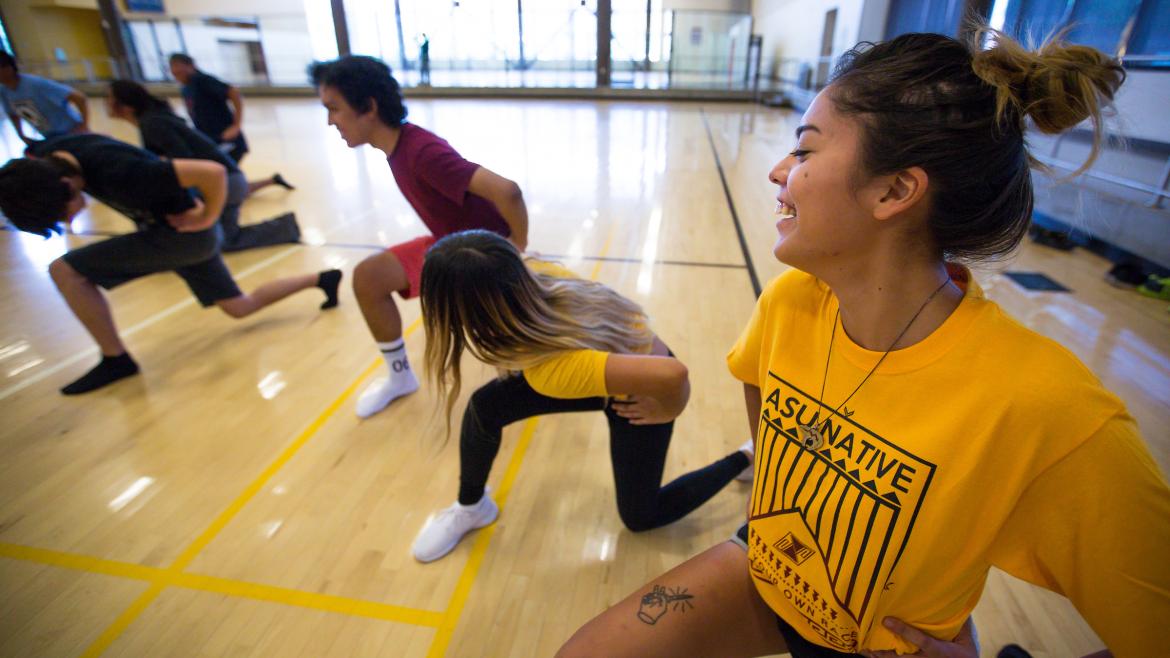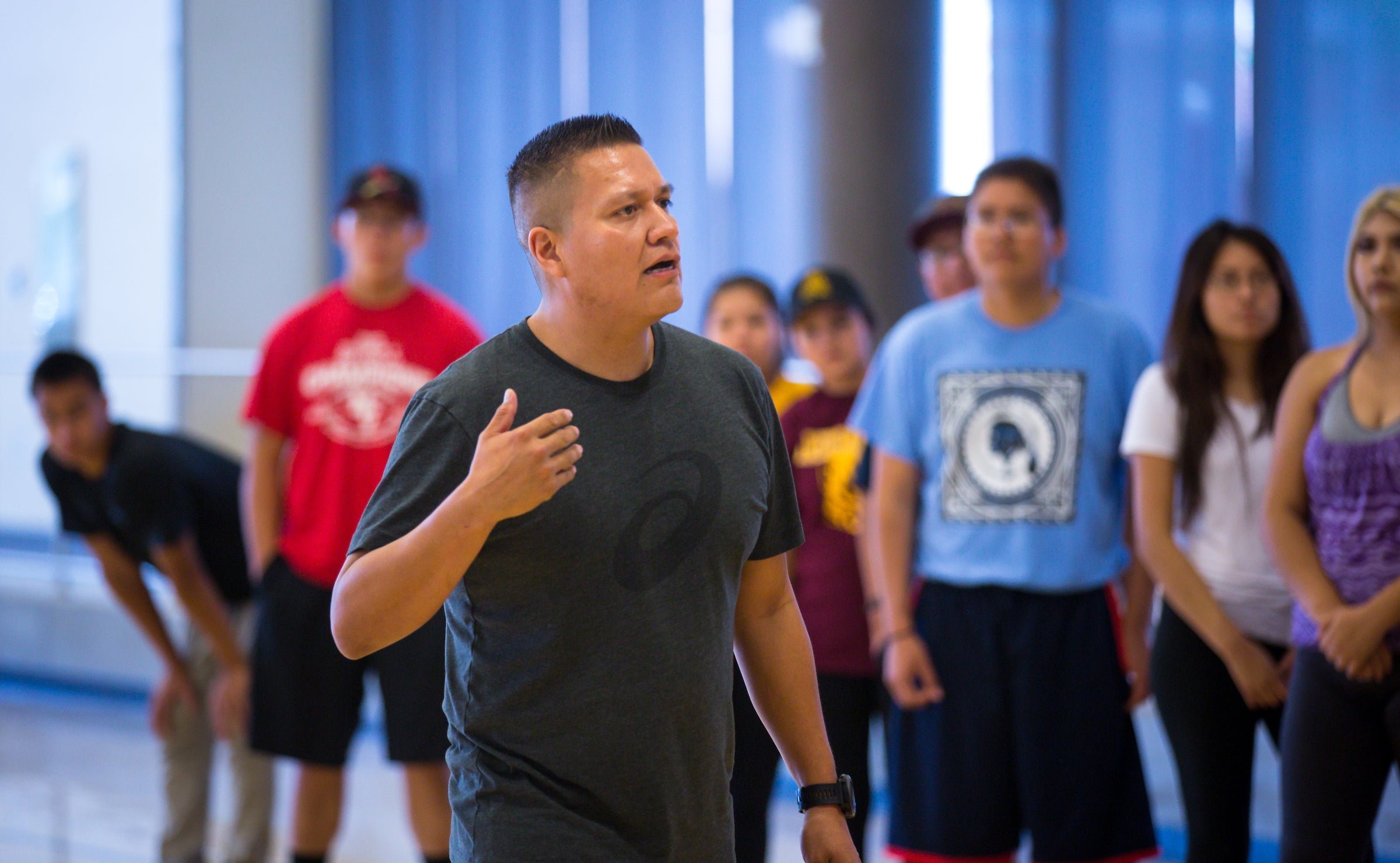Native American students who go from a reservation or rural community to a large university such as Arizona State University often face issues that others on campus can’t fathom.
Feelings of culture shock, isolation and difficulties adjusting to big-city life can be enough to derail college dreams. Just ask ASU sophomore Catalina Flores, a first-generation college student from the Pascua Yaqui Tribe near Tucson.
“It’s a completely different environment and like stepping into a whole new world,” Flores said.
Recognizing the unique challenges, ASU’s American Indian Student Support Services organizes an early start program geared specifically toward Native students making the rural to urban transition. The program, Student Preparedness Initiative: Readiness Inspired by Tradition, gives students two weeks to acclimate to the university, connect with friends and mentors, and learn about resources and student organizations before the start of the fall semester.
Students in the 2016 SPIRIT cohort will also hear from peer ambassadors such as Flores, who will be able to share how she navigated the emotional struggles of her first year at ASU: “Always remember where you came from and stay focused on your mission for coming to college in the first place.”
Laura Gonzales-Macias, associate director of American Indian Student Support Services, said the purpose of SPIRIT is to “create a successful environment for Native American students and to strengthen their confidence as well as give them a sense of belonging.” That includes giving equal attention to students’ intellectual, emotional, spiritual and physical well-being.
The program started July 31 and ends Aug. 12. It includes 79 participants, representing 24 Indian nations and tribes across 31 states.
Native American and indigenous students who grow up on reservations often find themselves suffering from more than run-of-the-mill homesickness. Beyond being separated from friends, family and familiar routines, many are also an ethnic minority for the first time in their day-to-day lives. The number of adjustments can be staggering, but Gonzales-Macias said SPIRIT can help. The first cohort of students in 2014 had a 7 percent higher retention rate than their first-time freshman peers who didn’t attend the program, she said, adding that the 2015 cohort had a 100 percent retention rate into the next school year.
Making connections to other American Indian and Alaska Natives was important to bioscience major Andrea Smolsey, who was born on the White Mountain Apache Reservation in eastern Arizona but attended high school in Louisiana. “Growing up in the military, I felt disconnected to my heritage. Coming here and being around other natives who know my family feels good.”
The program featured several group activities and more than 30 presentations and workshops by alumni, Native graduate students and administrators from many ASU student-support units and student organizations.

Art studies freshman Celeste Hubbard (right), of the Navajo Nation, practices lunges along with fellow SPIRIT cohorts, at the Sun Devil Fitness Complex on Aug. 10.
Photo by Charlie Leight/ASU Now
An appearance by ASU women’s basketball coach Charli Turner Thorne resonated with Makayla Roman, a 17-year-old from the Salt River Pima-Maricopa Indian Community.
“She had a great way of connecting with us and didn’t sugarcoat anything,” Roman said.
SPIRIT participants also completed ASU 19, a one-week course designed to set them up for academic success by introducing electronic tools and processes such as Blackboard, Digication e-portfolio and Writing Pal. They also completed an argumentative writing assignment and practiced attending office hours.
Pomo Tribe member Mica Sanchez traveled from Alameda, California, to attend ASU. He found ASU 19 especially helpful. “It teaches you etiquette with instructors and staff members, how to find homework and that almost everything is done online.”
Fitness instructor and ASU alumnus Dion Begay (pictured below) visited the Tempe campus on Wednesday to remind students not to spend all of their time on the computer and to incorporate exercise into their daily routines.
Dion Begay instructs students in the seven primal moves that will support their bodies with strength and flexibility in the Staying Active program during the SPIRIT workshop at the Sun Devil Fitness Complex on Aug. 10. Begay, an ASU alumnus who is an exercise physiologist and personal trainer, taught half the 70 students about taking care of and strengthening their bodies while they transition to their first year at ASU. Photo by Charlie Leight/ASU Now
“Everybody knows about the freshman 15, and I fell into that trap, too,” said Begay, a Navajo Tribe member who studied kinesiology at ASU. “In that first year of college, students get away from regimented eating and exercises. Sometimes they overindulge, lead sedentary lives and work out a lot less. Over time that will lead to health problems.”
Flores, a member of last year’s SPIRIT cohort, said joining clubs, organizations and participating in social experiences is also important for students’ overall well-being, and helped her get through her freshman year. She said she no longer feels homesick.
“I now have two families,” she said. “One here at ASU and one at home.”
Top photo: Criminology and criminal justice freshman Kealoha Kuamoo (left), of Hawaiian and Navajo descent, practices pushing and pulling with exercise and wellness freshman Megan Silversmith, of the Navajo Nation, as part of the Staying Active program during the SPIRIT workshop at the Sun Devil Fitness Complex on Aug. 10.
More Sun Devil community

No limits to a mother’s love, a wrestler’s determination
Judy Robles was washing dishes in the kitchen of her California home and keeping an eye on her young son, who was playing in the park that backed up to the house.She looked down for a second, maybe…

A symphony of service: Iraq War vet and ASU alum finds healing through music
At the age of 30 and only one credit away from obtaining his bachelor’s degree in piano performance, Jason Phillips could no longer stifle the feeling that he was stuck. He was teaching at a…

ASU first-gen college student is a leader in sustainability, social justice
Born and raised in Phoenix in a single-parent household, Mauricio Juarez Leon faced struggles growing up that included poverty, malnutrition, domestic abuse and limited resource access. And at the…

